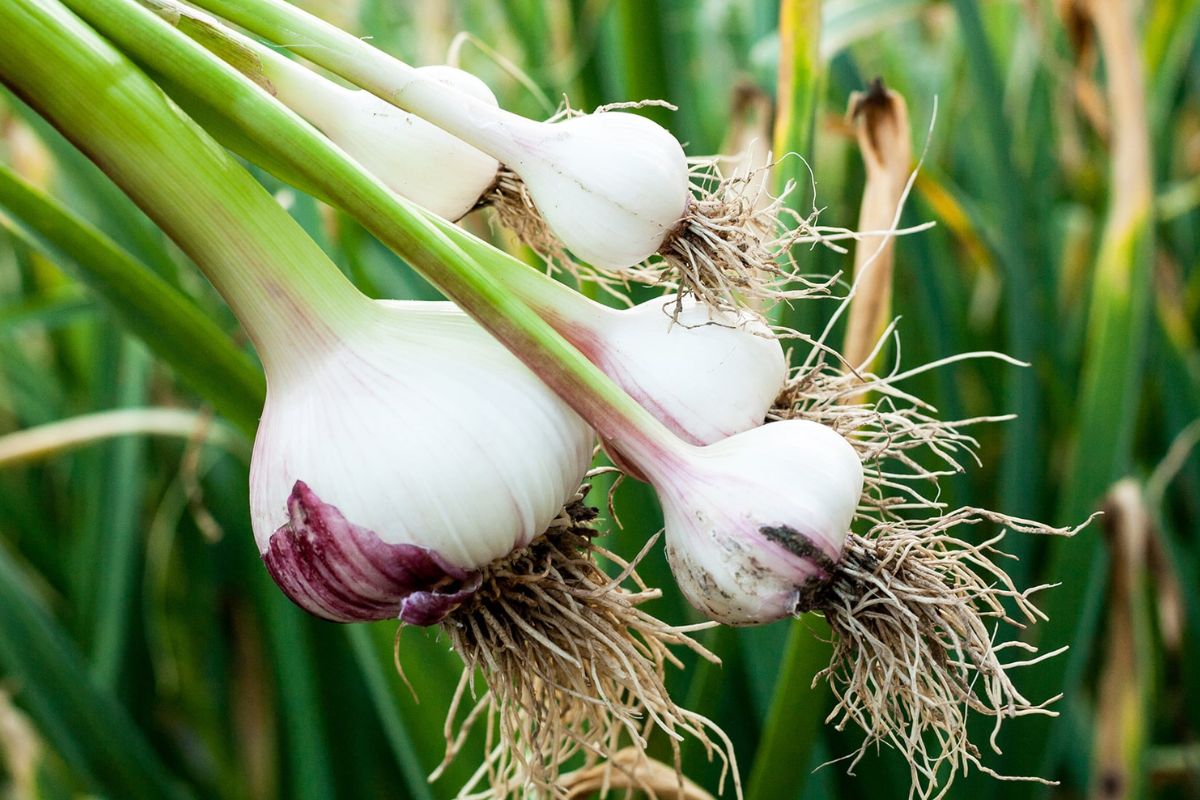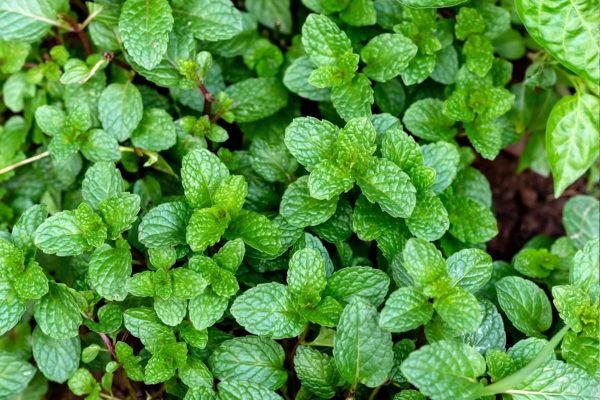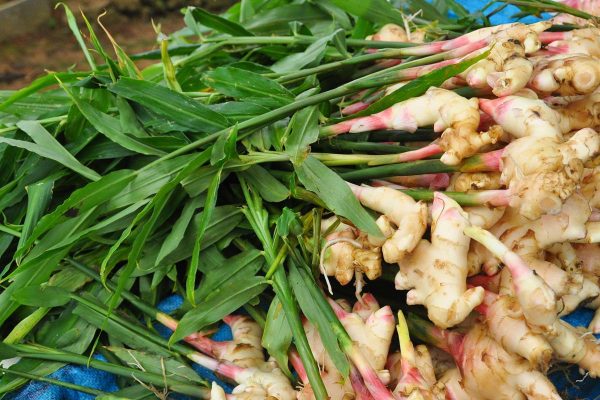Plants
Garlic
Introduction / परिचय
Scientifically known as Allium sativum, Garlic is a versatile and indispensable herb that has graced kitchens and gardens for centuries. This perennial plant belongs to the Allium family, which includes onions, shallots, and leeks. It's prized not only for its distinctive and intense flavour but also for its numerous health benefits and ease of cultivation. The garlic plant features long, slender leaves, forming underground bulbs with individual cloves. It thrives in various climates, making it a popular addition to home gardens. Garlic's rich history, culinary significance, and therapeutic properties have firmly established it as a kitchen essential and a sought-after herb for gardening enthusiasts.
Also Read This :How to Grow Sunflower from Seeds At Home
| English Name: | Garlic |
| Hindi Name: | लहसुन (Garlic) |
| Scientific Name: | Scientific Name |
| Family: | Amaryllidaceae |
| Kingdom: | Plantae |
| Light : | Full Sun |
| Height: | 60 cm (2 feet) tall |
| Flower Color : | Lavender to Purple but can also be found in White and Magenta |
| Leaves Color : | Green |
| Eason Features : |
Also Read This :Greening Your Home: The Benefits of Indoor Plants
When to Plant Garlic
You may be looking for information on when to plant garlic. The best time to plant garlic varies by region, but it's usually planted in the fall or early winter for a spring harvest. Here are the general guidelines:
Fall Planting (Recommended):
- In most regions, planting garlic in the fall, ideally, a few weeks before the first hard frost, is the best practice. This allows the garlic to establish roots before winter dormancy.
Spring Planting (Not Ideal):
- In some milder climates, garlic can be planted in early spring, but it may result in smaller bulbs than fall-planted garlic.
To determine the exact timing for your location, consider local climate conditions and frost dates.
Also Read This :Easy way to grow Strawberry at Home
Flowering time of Garlic
Garlic, primarily grown for its flavorful bulbs, produces flowers often removed to encourage bulb development. The flowering time of garlic typically occurs in late spring or early summer. The garlic plant sends up a long, slender stem known as a scape, which develops a bulbil or bulb-like structure at the tip. This bulbil can produce tiny, garlic-flavoured cloves if left to mature. However, gardeners often remove the scapes to redirect the plant's energy into bulb growth. The scapes are edible and can be used in various dishes, offering a milder garlic flavour than the bulbs.
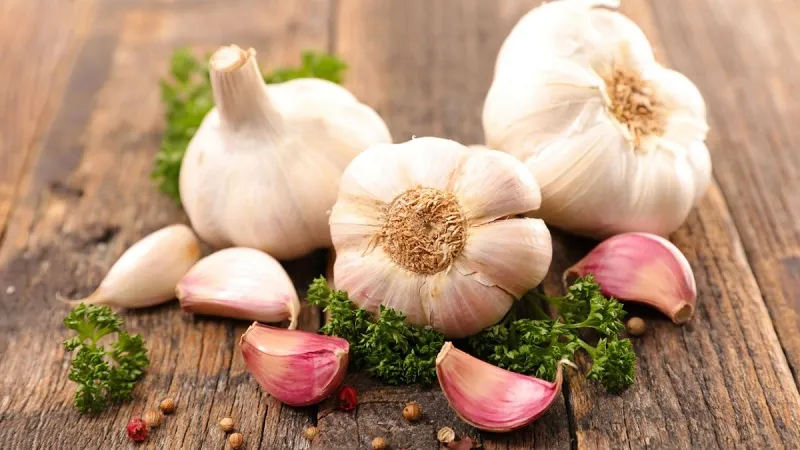
Also Read This :What is Coco peat ? & How to Make Coco peat at Home
Varieties / किस्मे
Garlic comes in several varieties, each with unique flavour profiles and characteristics. Here are some common varieties of garlic:
Softneck Garlic (Allium sativum var. sativum):
Artichoke Garlic: She is known for its mild flavour and soft, easy-to-braid stems. It's a popular choice for braiding and has a long shelf life.
Silverskin Garlic: This is another softneck variety often used for braiding. Silverskin garlic has a strong flavour and good storage capabilities.
Hardneck Garlic (Allium sativum var. ophioscorodon):
Rocambole Garlic: A favourite among garlic connoisseurs, Rocambole garlic is known for its rich, complex flavour. It produces tightly coiled scapes.
Porcelain Garlic: She is known for its large, easy-to-peel cloves and robust, full-bodied flavour. Porcelain garlic stores well.
Purple Stripe Garlic: Identified by its purple stripes on the bulb wrappers, this variety offers a robust and well-rounded flavour.
Siberian Garlic: A cold-hardy variety with a mild to medium flavour is often preferred in colder climates.
Turban Garlic: This unique variety has a distinctive appearance with its purple-streaked bulb wrappers and offers a spicy flavour.
Creole Garlic: Creole garlic is often grown in southern regions and is known for its spicy, rich flavour.
Elephant Garlic (Allium ampeloprasum):
**Elephant garlic is not a true garlic but a close relative. It has a mild, sweet flavour and large cloves.
Black Garlic:
Black garlic is not a distinct garlic variety but regular garlic that has been fermented under controlled conditions. It has a sweet, umami-like flavour and a soft, dark texture.
These are just a few of the many garlic varieties available. The choice of variety can significantly impact garlic's flavour, storage, and adaptability in your garden and kitchen. Gardeners often experiment with different varieties to suit their climate and culinary preferences.
Also Read This :12 Delicious and Nutritious Herbal Teas to Boost Your Health
Classification of Plants/ पौधों का वर्गीकरण
Garlic plants, scientifically known as Allium sativum, are classified primarily based on their growth habits and bulb characteristics. The two main categories are "softneck garlic" (Allium sativum var. sativum) and "hardneck garlic" (Allium sativum var. ophioscorodon). Softneck garlic varieties tend to have flexible, non-woody stems and many cloves in each bulb. They are well-suited for braiding and have a longer shelf life. In contrast, hardneck garlic varieties produce a central woody stem, known as a scape, and typically have fewer but larger cloves. Various subtypes of garlic within these categories exhibit distinctive flavours, appearances, and growing preferences.
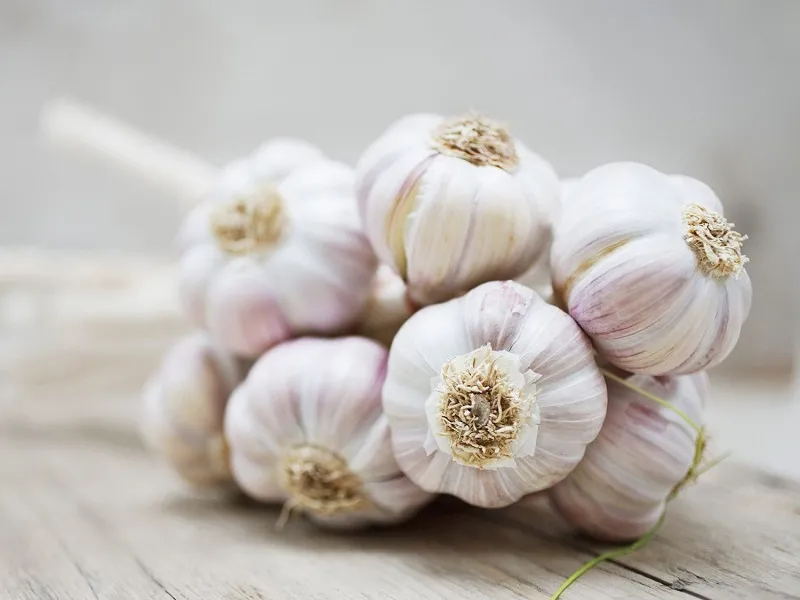
Also Read This :10 Summer Solutions: How to Safeguard Your Balcony Garden from Heat Stress and More
History / इतिहास
Garlic (Allium sativum) boasts a rich history spanning over 7,000 years. Originating in Central Asia or southwestern Siberia, it spread across ancient civilizations from Egypt and India to Greece and Rome. Garlic was revered for its culinary and medicinal properties, believed to enhance strength and endurance. It held significance in various cultures, often as a protective talisman against evil spirits and illnesses. Ancient texts, including the Ebers Papyrus and Hippocratic writings, highlighted its medicinal use. Garlic also found its way into folklore, including stories of vampires and the biblical tale of the Exodus. Today, garlic continues to be cherished worldwide for its diverse applications.
Also Read This :Discover the Secrets to Growing Beautiful Cardamom Plants!
Uses and Benefits / उपयोग एवं फायदे
Garlic (Allium sativum) is celebrated for its diverse uses and remarkable health benefits. Rich in allicin, it offers potent antibacterial and antiviral properties. As a culinary staple, it elevates the flavours of various dishes. Garlic is associated with heart health, as it can lower blood pressure and reduce the risk of cardiovascular disease. It also aids in lowering cholesterol levels. Moreover, garlic's antioxidant properties combat free radicals and may reduce the risk of certain cancers. Its ability to boost the immune system, support digestion, and relieve colds makes garlic an invaluable herb in the kitchen and natural medicine.
Also Read This :Rubber Plants: A Beginner’s Guide to Growing and Maintaining Them
How to Grow Plant / कैसे उगाएं
Growing garlic (Allium sativum) is a straightforward process. Start by selecting healthy garlic bulbs as planting stock. In the fall, typically a few weeks before the first frost, plant individual cloves in well-draining soil. Space them 4-6 inches apart, pointed side up, about 2 inches deep. Garlic thrives in sunny locations, so ensure it gets at least 6 hours of sunlight daily. Keep the soil consistently moist but not soggy. In spring, scapes (flowering stems) may appear; it's advisable to remove them to encourage bulb growth. Harvest when the lower leaves turn yellow, and bulbs have developed into separate cloves, usually in late spring or early summer. Cure the bulbs by drying them for a few weeks before storage.
Also Read This :Revitalize Your Mind and Body with the Power of Brahmi
How to Take Care/ देखभाल कैसे करे
Taking care of garlic plants involves several key steps. Maintaining consistent soil moisture by watering regularly ensures the soil remains moist but not soggy. Weed the area around the plants to reduce competition for nutrients and sunlight. Fertilize with a balanced, all-purpose fertilizer in early spring as the plants emerge. Be vigilant for pest infestations like aphids and diseases like rust, treating them promptly to prevent damage. Consider removing scapes (flowering stems) to divert energy into bulb development. Finally, harvest when the lower leaves turn yellow, and the bulbs have segmented into individual cloves, then cure them in a cool, dry place for a few weeks before storage.
Also Read This :3 Method to Grow Mint (Pudina) at Home
Interesting Facts / रोचक तथ्य
- Ancient Origins: Garlic's history dates back over 7,000 years and was used by ancient Egyptians, Greeks, and Romans for culinary and medicinal purposes.
- Pest Repellent: Garlic's pungent odour acts as a natural pest repellent. It can help protect other plants from insects when planted nearby.
- Health Benefits: Garlic is renowned for its potential health benefits, including lowering blood pressure, reducing cholesterol, and boosting the immune system.
- Longevity Legends: In some cultures, garlic was believed to provide longevity. Egyptian labourers who built the pyramids were reportedly given garlic for strength and endurance.
- Garlic Varieties: There are over 600 subvarieties of garlic, each with its unique flavour and characteristics.
- Garlic Scapes: The flowering stems, known as scapes, are edible and have a milder garlic flavour. They are often used in various dishes.
- Allicin: The compound responsible for garlic's distinctive smell and many health benefits is allicin, which is released when garlic is crushed or chopped.
- Garlic Festival: Gilroy, California, is home to the annual Gilroy Garlic Festival, a celebration of all things garlic featuring garlic-themed foods and activities.
- Garlic Folklore: Garlic has been associated with warding off evil spirits and vampires in various cultures, leading to its use as a protective talisman.
- Culinary Versatility: Garlic is a critical ingredient in countless world cuisines, used to flavour dishes ranging from Italian pasta to Indian curries, adding depth and complexity to recipes.
Also Read This :How To Grow Gazania Flower at Home

